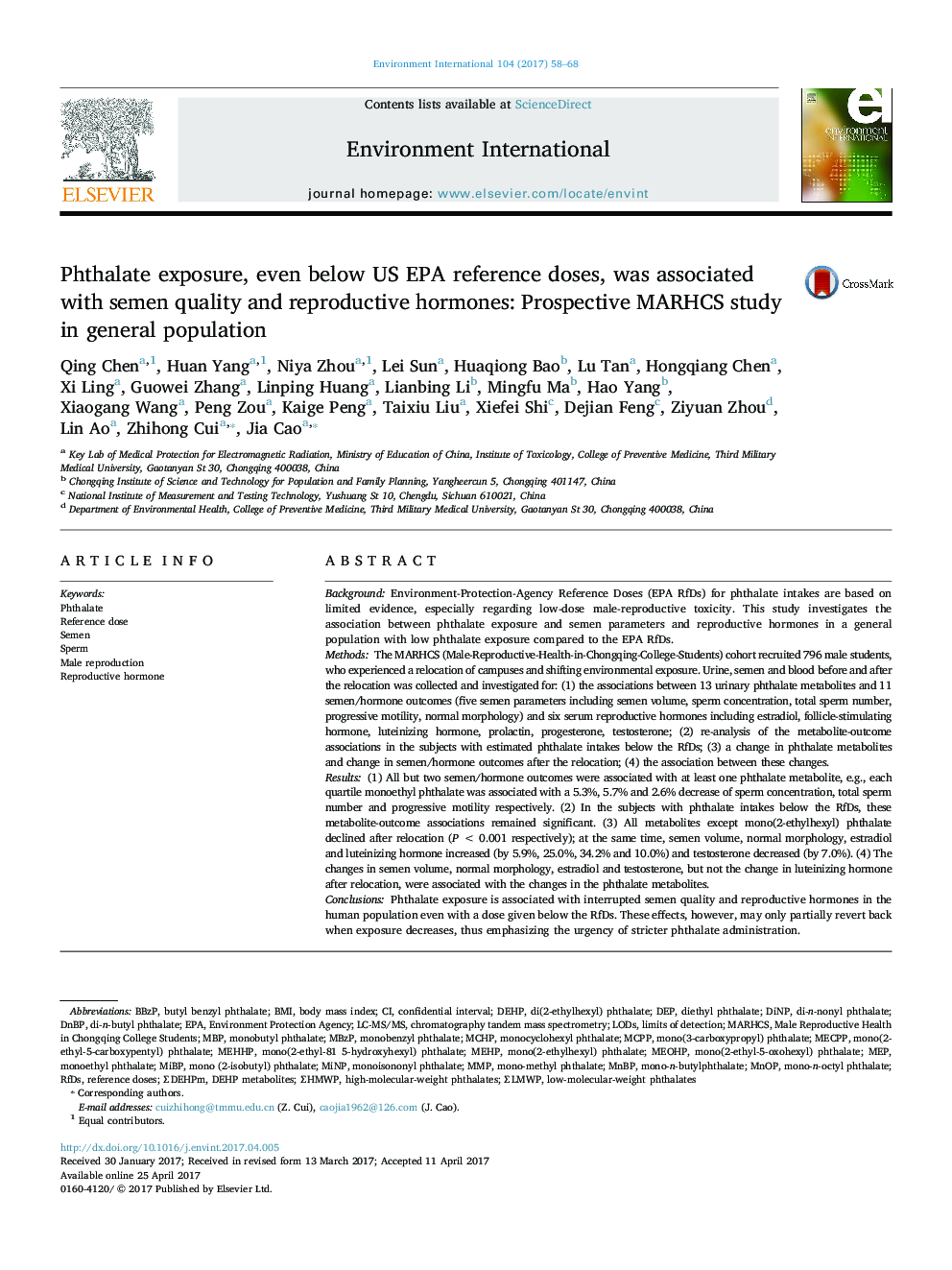| Article ID | Journal | Published Year | Pages | File Type |
|---|---|---|---|---|
| 5748350 | Environment International | 2017 | 11 Pages |
â¢We measured semen/hormone outcomes in 796 males with low phthalate exposure.â¢Phthalate exposures were below EPA reference doses in > 94% of the subjects.â¢Phthalates below EPA reference doses correlated with 9 out of 11 outcomes.â¢When phthalate exposures decreased, some but not all outcomes improved.
BackgroundEnvironment-Protection-Agency Reference Doses (EPA RfDs) for phthalate intakes are based on limited evidence, especially regarding low-dose male-reproductive toxicity. This study investigates the association between phthalate exposure and semen parameters and reproductive hormones in a general population with low phthalate exposure compared to the EPA RfDs.MethodsThe MARHCS (Male-Reproductive-Health-in-Chongqing-College-Students) cohort recruited 796 male students, who experienced a relocation of campuses and shifting environmental exposure. Urine, semen and blood before and after the relocation was collected and investigated for: (1) the associations between 13 urinary phthalate metabolites and 11 semen/hormone outcomes (five semen parameters including semen volume, sperm concentration, total sperm number, progressive motility, normal morphology) and six serum reproductive hormones including estradiol, follicle-stimulating hormone, luteinizing hormone, prolactin, progesterone, testosterone; (2) re-analysis of the metabolite-outcome associations in the subjects with estimated phthalate intakes below the RfDs; (3) a change in phthalate metabolites and change in semen/hormone outcomes after the relocation; (4) the association between these changes.Results(1) All but two semen/hormone outcomes were associated with at least one phthalate metabolite, e.g., each quartile monoethyl phthalate was associated with a 5.3%, 5.7% and 2.6% decrease of sperm concentration, total sperm number and progressive motility respectively. (2) In the subjects with phthalate intakes below the RfDs, these metabolite-outcome associations remained significant. (3) All metabolites except mono(2-ethylhexyl) phthalate declined after relocation (PÂ <Â 0.001 respectively); at the same time, semen volume, normal morphology, estradiol and luteinizing hormone increased (by 5.9%, 25.0%, 34.2% and 10.0%) and testosterone decreased (by 7.0%). (4) The changes in semen volume, normal morphology, estradiol and testosterone, but not the change in luteinizing hormone after relocation, were associated with the changes in the phthalate metabolites.ConclusionsPhthalate exposure is associated with interrupted semen quality and reproductive hormones in the human population even with a dose given below the RfDs. These effects, however, may only partially revert back when exposure decreases, thus emphasizing the urgency of stricter phthalate administration.
